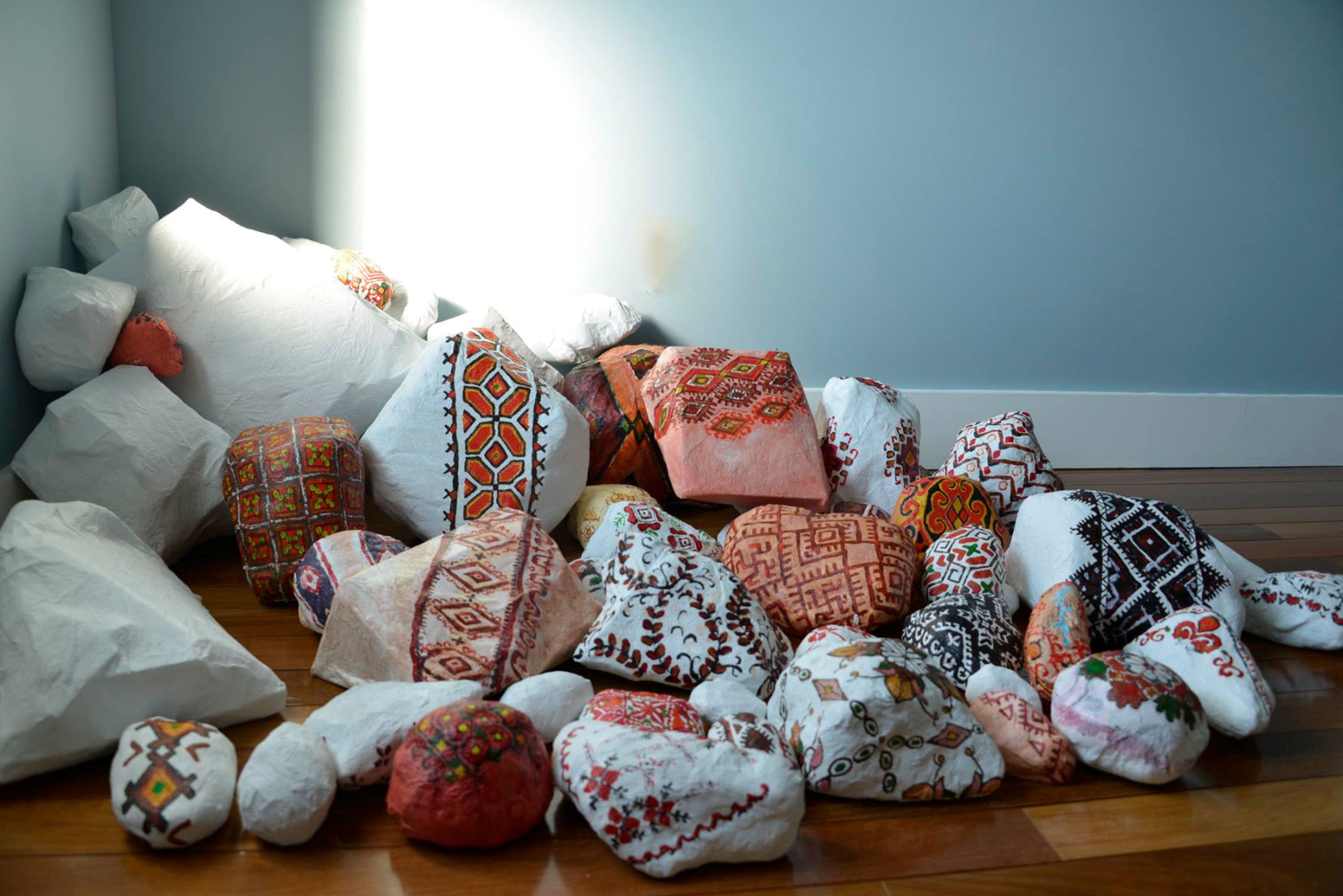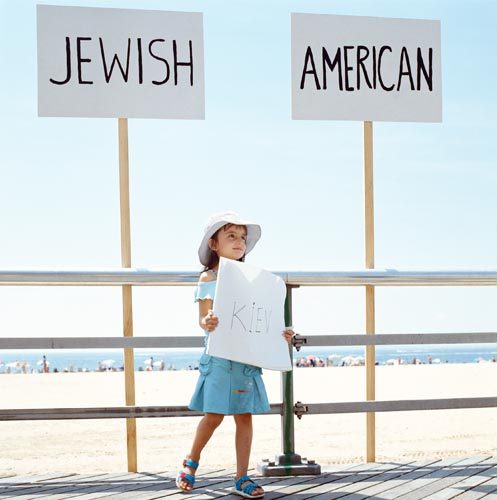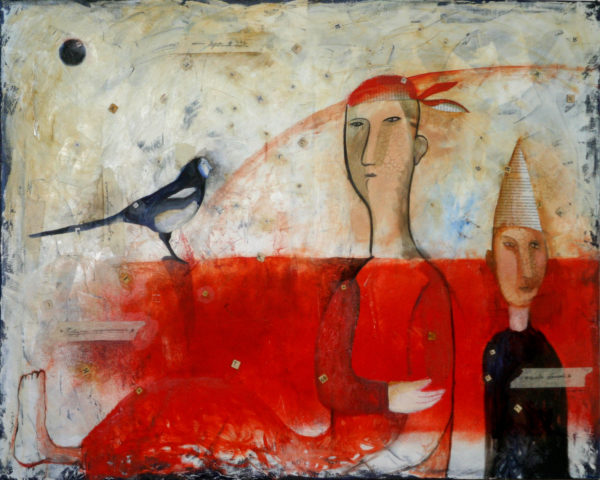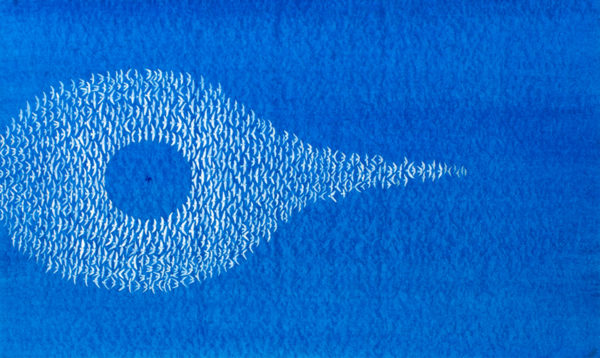
13 Mar Making Continuity Contemporary: Eastern Europe in New York
On view March 13–July 17, 2016
Read the exhibition brochure online
In different ways, each artist explores the disruptions and continuities in their cultural backgrounds, whether through pictorial abstraction, participatory projects, auditory or written language, or conceptual reinterpretation of cultural symbols. Their mediums also range widely and include hand-drawn animation and audio, chemigrams, painting, mixed media, photography, sculpture, and installation.
Maryna Bilak, a Ukrainian artist originally from the Carpathian mountains, came to the U.S. to study art at the New York Studio School in 2012. Using her knowledge of traditional Ukrainian textile motifs, she incorporates these patterns into 3-dimensional paintings in which she manipulates color and shape by folding canvas and in multimedia installations in which she assembles hand-painted stones.
Alina and Jeff Bliumis’s series Casual Conversations in Brooklyn (2007) engages questions of how cultural experiences and identities intersect. The photographers spent a day in Brighton Beach—home to a large Jewish and Russian-speaking community—and offered passersby the opportunity to choose from three different signs featuring the words “Russian,” “Jewish,” and “American,” or to create their own. On view are a selection of subjects photographed holding the signs they chose—sometimes more than two—to represent their cultural identity. Alina and Jeff Bliumis were born in Belarus and Moldova, respectively.

Alina and Jeff Bliumis, Casual Conversations in Brooklyn, 2007, C-print, 40 x 50 inches. Courtesy of the artists.
Yevgenia Nayberg, who grew up in Kiev, Ukraine, is represented by the painting Bird Dictionary (2011), a rumination on the process of learning a new language. Phrases in Cyrillic text are incorporated into the work, labeled as ordinary things: “regular person,” “regular landscape,” and “standard moon.” However, the reality is the opposite, and the work touches on the idea that learning a new language is strange and surreal for non-speakers. The artist also pays homage to Suprematism in another work on view, a triptych entitled Happy Man Series (2013).
Acclaimed illustrator Peter Sís’s work using the motif of wings references themes of freedom and liberation. In two illustrations from his adaptation of The Conference of the Birds (2011)—a 12th century Persian epic poem published by The Penguin Press—a surrealistic flock of birds in the shape of an eye that spreads across a richly colored surface, one blue, one yellow, demonstrates the process of journeying. Sís emigrated to the United States from Czechoslovakia in 1982.

Yevgenia Nayberg. Bird Dictionary, 2011, oil and collage on canvas, 24 x 30 inches. Courtesy of the artist.
Diana Shpungin’s You Will Remember This (2011) is a hand-drawn animation derived from video footage of her father recorded several months before his death. In it he recounts anecdotes about life in Soviet Latvia, including the tale of acquiring his first car and the black market culture of the USSR in the late 1950s.

Peter Sís, “The endless deserts are crystals of sand, the mountain ranges are strings of beads,” 2011, published in The Conference of the Birds, ink and watercolor on paper, 15 ¼ x 22 1/8 inches. Image courtesy of the artist and Mary Ryan Gallery, New York.
Leonard Ursachi’s drawings of bunkers and a maquette for Fat Boy—a large sculpture on view in Prospect Park in Brooklyn—engage what the artist describes as “the bunker mentality.” Ursachi’s native Romania is dotted with bunkers abandoned after the Soviet period—symbols that instill a sense of fear and the unknown. He defected from the country in 1980.
![]() This exhibition is supported, in part, by public funds from the New York City Department of Cultural Affairs in partnership with the City Council.
This exhibition is supported, in part, by public funds from the New York City Department of Cultural Affairs in partnership with the City Council.
Featured image: Maryna Bilak, Time to Gather Stones, 2016, paint, plaster, found materials, dimensions variable. Courtesy of the artist.

